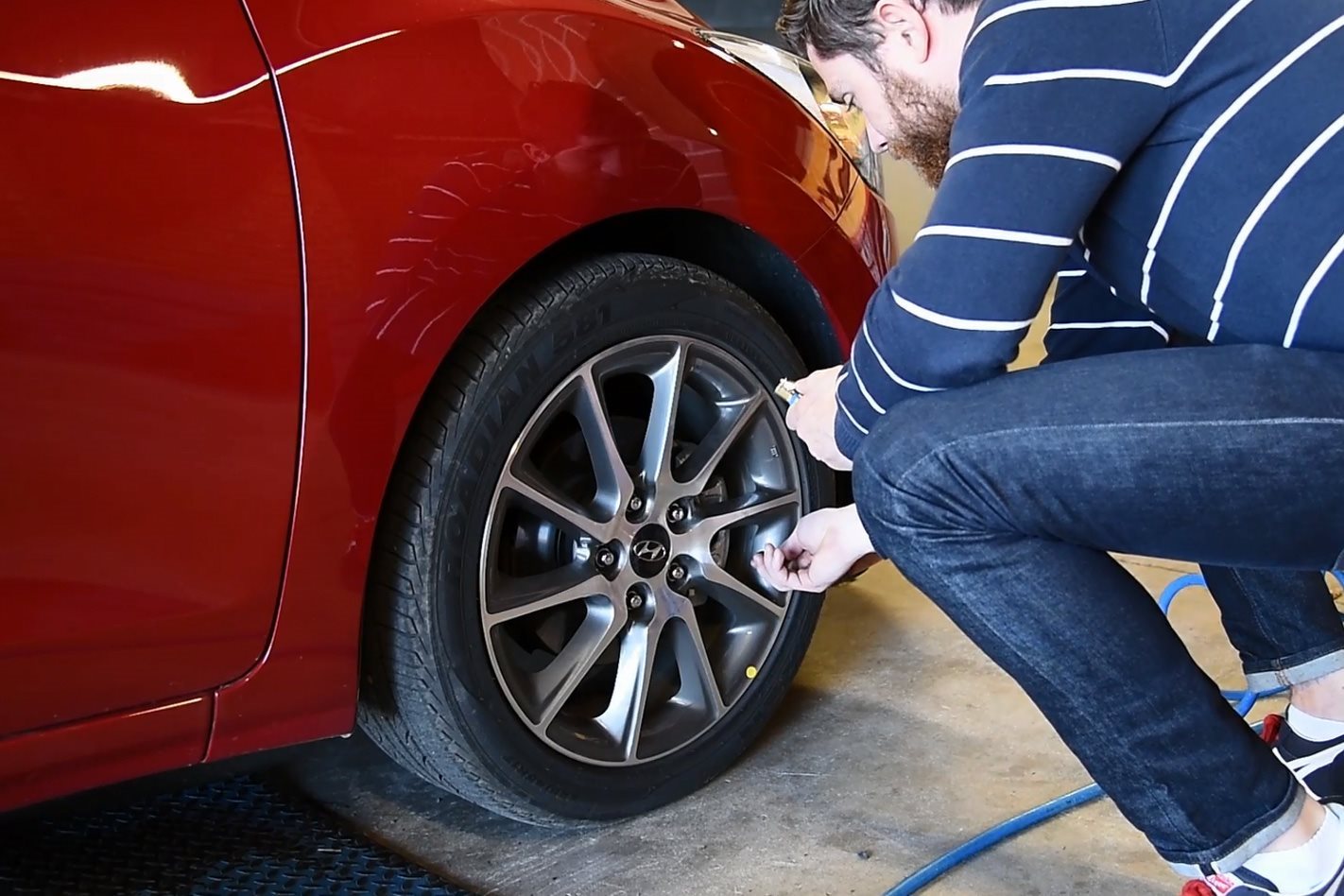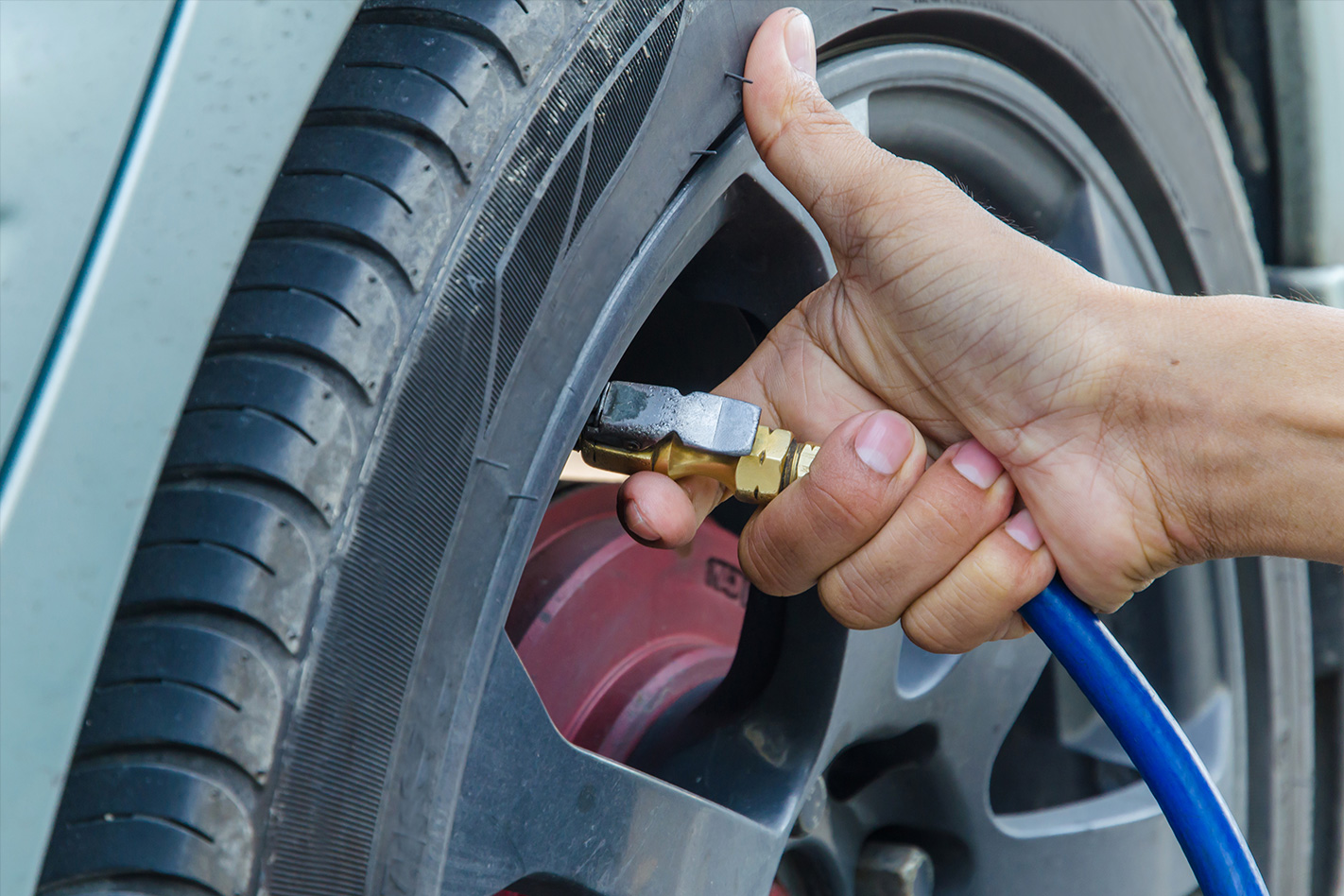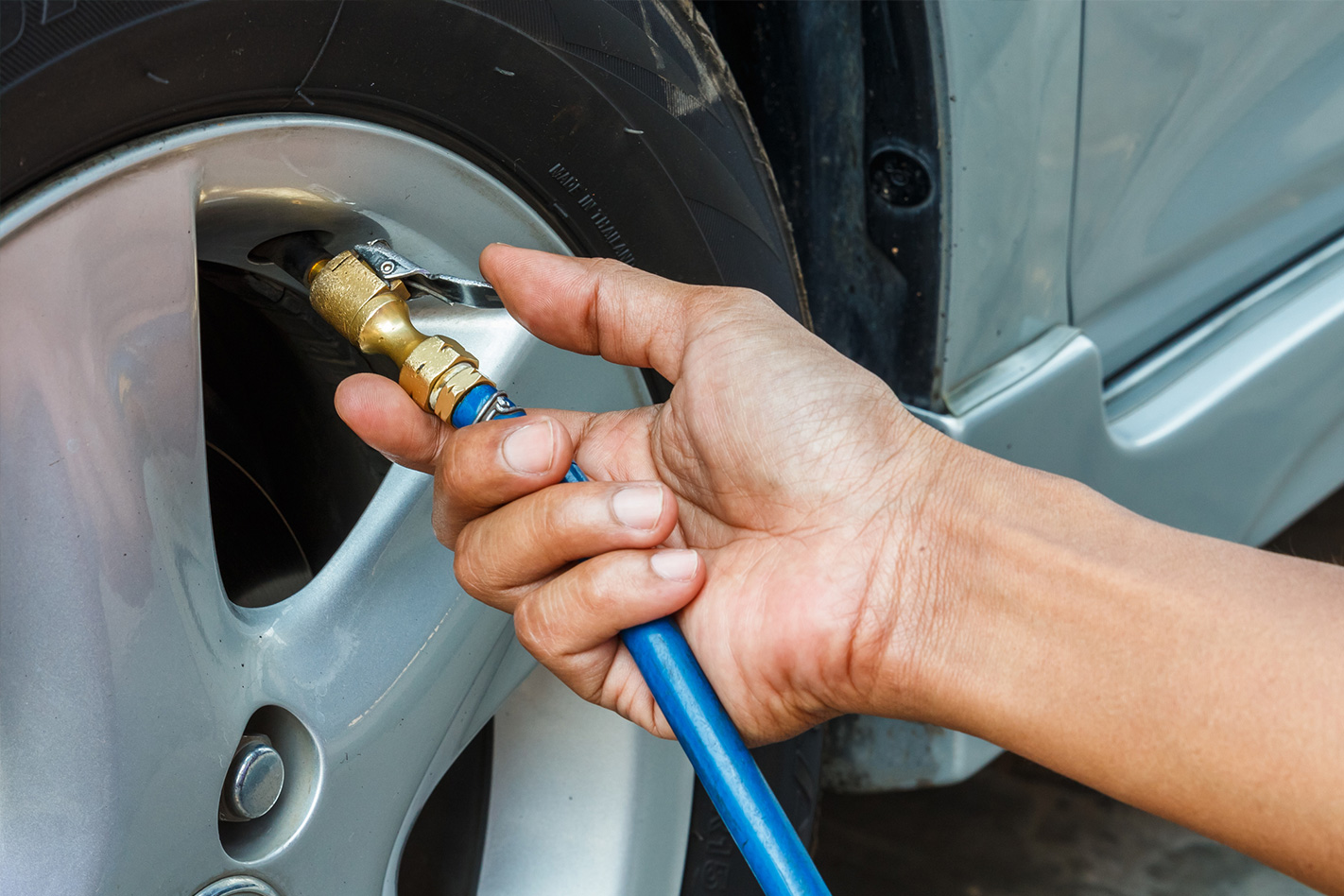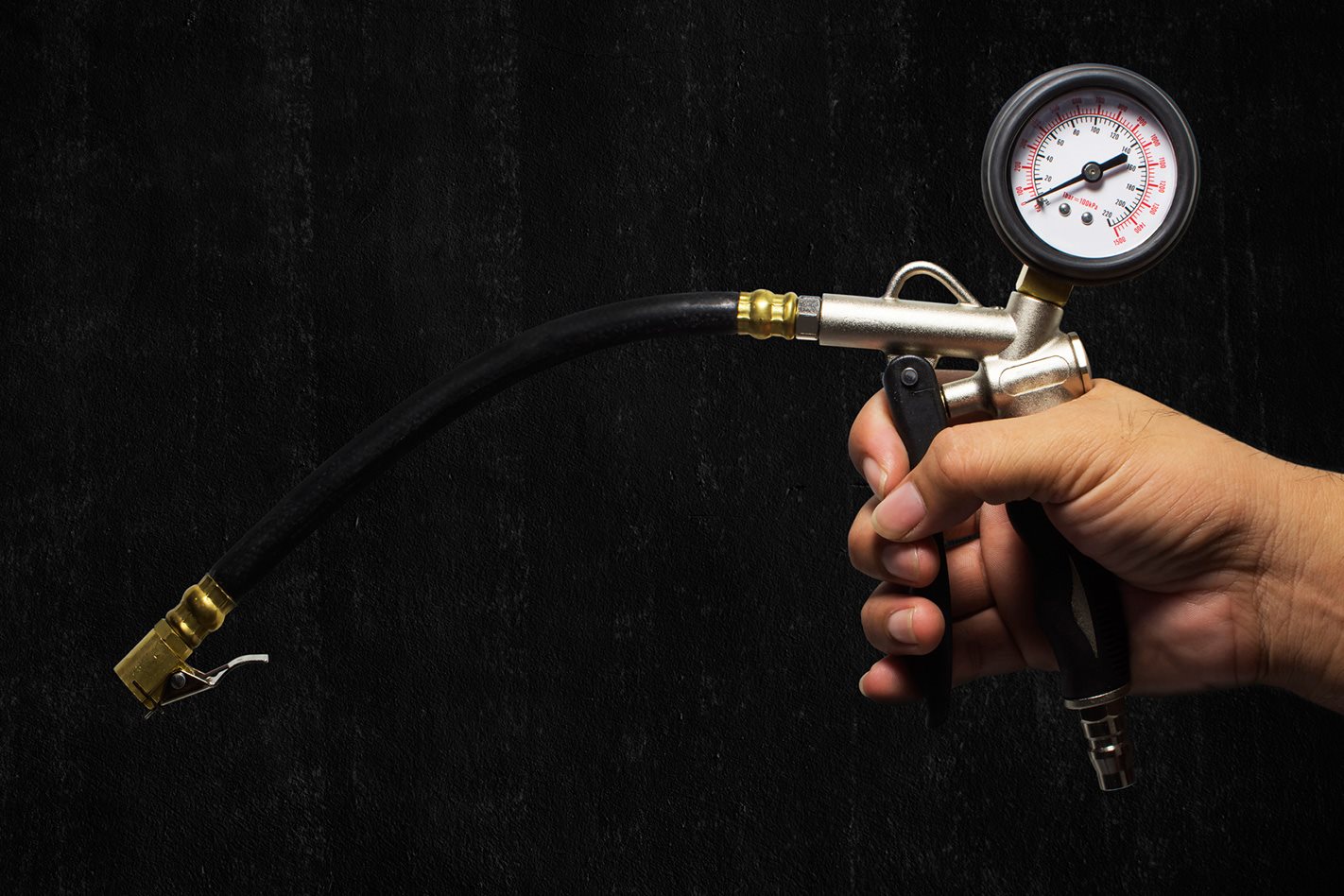
It should come as no surprise just how important correct tyre pressures are. Not only will a vehicle rolling on well-maintained tyres turn, stop and accelerate safely and more comfortably, it will also return the optimum fuel economy, so it should be top of the list of weekly jobs you can take care of yourself.
Wrong pressure
With insufficient air pressure inside the tyre, the sidewall will deform and flex more than it is designed to, which increases rolling resistance and temperature. With too much air in the tyre, the tread can balloon out, reducing its contact with the road, which can reduce grip and impact the tyre’s wear.
Riding around with under inflated tyres will increase fuel consumption and besides the safety implications, won’t feel as enjoyable as your car can at its best, but some motorists find the range of inflators found on service station forecourts confusing.

The good news is that checking and ensuring the correct tyre pressure is a simple job, made easier by automatic systems that only require you to pre-set the pressure and connect the hose.
What should my tyre pressure be?
The inflation pressure of tyres varies significantly depending on the size and weight of the car, as well as the type of tyre fitted to the wheel so there’s no one pressure that fits all.
Small lightweight cars with relatively tall profile tyres such as Fiat’s 500 compact hatchback require about 32psi or 2.2bar for normal operation. With larger, lower-profile wheels and tyres and higher performance demands, Audi’s S3 hot hatch needs about 42psi.
A 4WD tyre inflation pressure is generally high due to the weight of the vehicle and the heavy loads it can carry, although these tyre pressures can also be reduced significantly when extra traction is required at low speeds on loose surfaces. Anywhere from 40psi down to 11psi when tackling something like soft sand.
For context though, a heavy goods truck can have tyre pressures as high as 120psi, while the largest airliners have about 200psi in their highly specialised tyres.

Read the correct pressure from your tyre placard, which can be found inside the door jamb, behind the fuel filler cap or in the owner’s manual. There is often a table with a few possibilities, which allows you to select the correct pressure even if you are carrying a full load of passengers with luggage, and for each tyre size fitted as standard. Check the sidewall of the tyre and match it to the information on the placard to find the pressure you need.
The pressure will be stated either in bar or PSI which you will need to select on the inflator with the simple press of a button. With a few more prods of the up or down buttons you can set the required figure.
Then remove the dust caps and attach the air hose by squeezing the tab and releasing once the fitting is pressed onto the tyre valve. You won’t need to hold the hose in place as long as the locking tab is working correctly.
Watch next: How to change a tyre
You don’t need to watch the display but it is a good idea to observe the pressure before correction to see if your tyres are holding air with a good seal. If one particular tyre is dropping more pressure than the others it may indicate it has a slow leak or puncture.
When the machine beeps, it has set the pressure. Replace the dust caps to finger tight and you are good to go. Some early tyre pressure monitoring systems require a reset before moving off. You can find out how to do this in the user manual.
If the service station has a more traditional inflator with gauge the process is only a little more complicated.

Simply attach the hose in the same way you would the fully automatic version and watch the sliding bar or rotating needle gauge. The inflator can add air to the tyre by squeezing the trigger all the way but can also allow air back out again by partly depressing it, if you have accidentally over inflated. Others have a small separate button for releasing excess pressure.
Remember that a manual inflator will only give you an accurate reading after adding air so if you have to remove a little pressure, be sure to give the trigger a quick full press before reading again.
An accurate reading is also only possible if the inflator is in good condition. If you suspect the equipment is not up to scratch it’s a good idea to have your own pressure gauge that can be stored in the glove box out of harm’s way and can be used to give one final check once you think you are done.
Tyre pressure should be checked each week, which might sound a little too regularly, but slow punctures won’t be detected until it’s too late if you leave it too long between inspections.
Always try to check the pressures when the tyre is cold as a long journey or hard driving will increase the temperature and cause pressure increases. The same will happen in hot weather or if the tyre has been in direct sunlight.
When you are up close and personal with your tyres, you can also use it as an opportunity to check the general condition. Any perishing rubber, splits, bulges or other damage should be inspected by a good mechanic or tyre shop. If the tread is worn out, it’s time to replace them.
If there are signs of uneven wear the cause should be investigated, incorrect pressures might be to blame or you may need a wheel alignment among other possibilities.



